Cultural heritage Nanyin connects past and present in China and Singapore
新華網(wǎng)
Editor: huaxia
2025-10-24 22:00:17
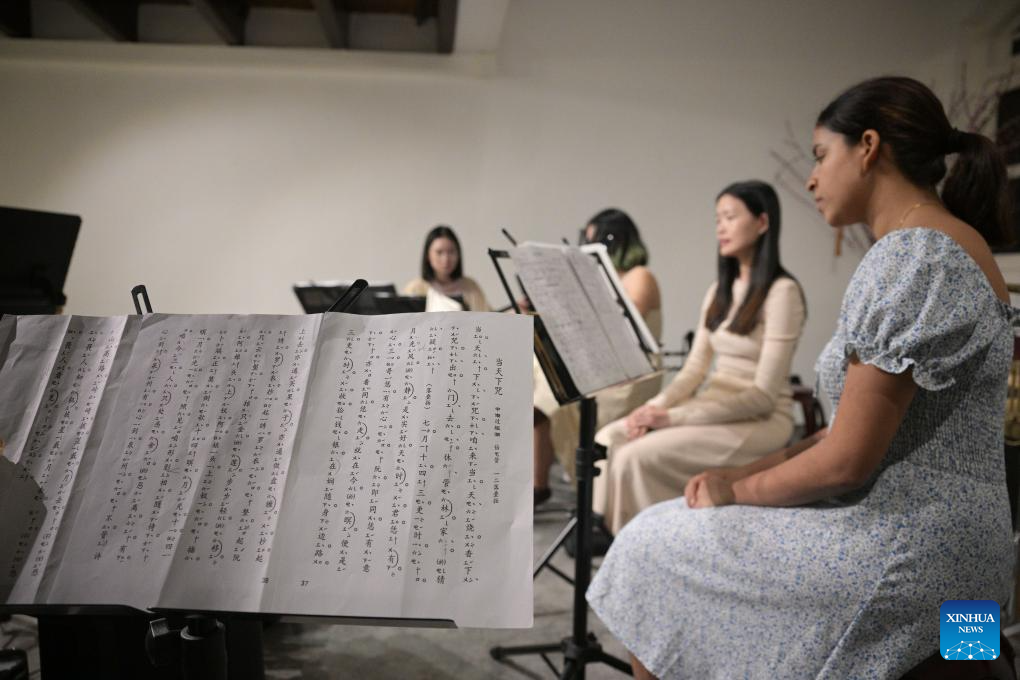
Nadya Tasha Lim (R), a member of a music society named Siong Leng, learns Nanyin in Singapore on Jan. 13, 2025. Nanyin, which originated from southeast China's Fujian Province, is known as the "living fossil" of ancient Chinese music and literally means music in the south. It is a traditional opera in Fujian dialect.
In 2009, Nanyin was listed as a World Human Verbal and Intangible Cultural Heritage by UNESCO.
The inheritance of Nanyin relies on dedicated practitioners. Cai Liyong, a Nanyin artist who started learning Nanyin since childhood, teaches Nanyin to students at a primary school in Jinjiang of Fujian Province every week, promoting authentic Nanyin among young students.
In Singapore, a music society named Siong Leng is also dedicated to the preserving and promoting Nanyin. Established in 1941, Siong Leng made several successful performances in cities including Paris, Tokyo, and New York.
From China to Singapore, from classrooms to the global stage, Nanyin weaves a continuous thread through cultural memories at home and abroad. (Photo by Then Chih Wey/Xinhua)
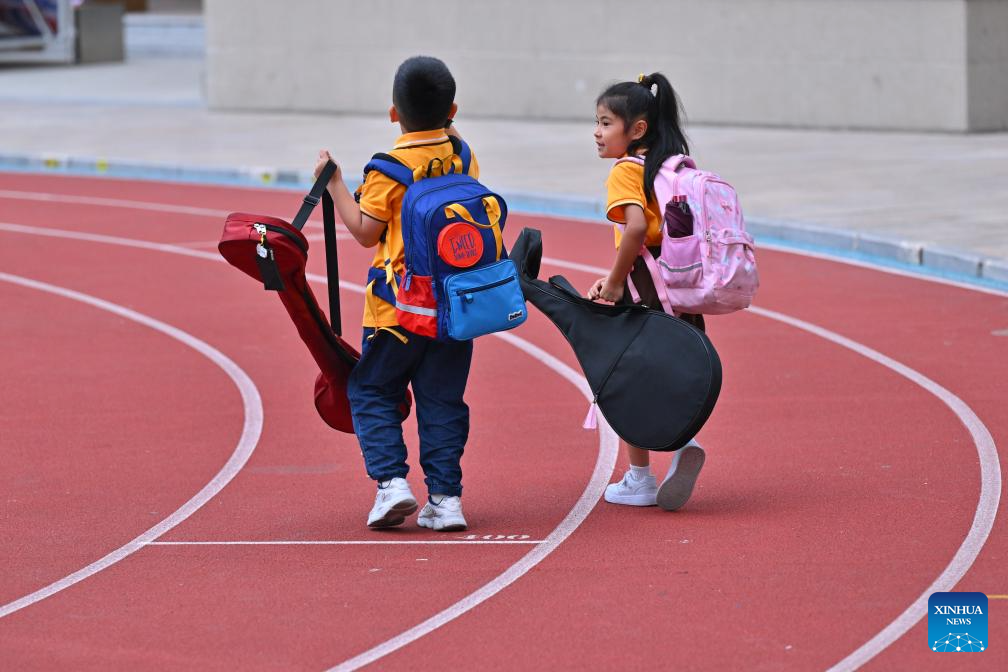
Students walk on the playground after a Nanyin class at a primary school in Jinjiang, southeast China's Fujian Province, on Oct. 23, 2025. Nanyin, which originated from southeast China's Fujian Province, is known as the "living fossil" of ancient Chinese music and literally means music in the south. It is a traditional opera in Fujian dialect.
In 2009, Nanyin was listed as a World Human Verbal and Intangible Cultural Heritage by UNESCO.
The inheritance of Nanyin relies on dedicated practitioners. Cai Liyong, a Nanyin artist who started learning Nanyin since childhood, teaches Nanyin to students at a primary school in Jinjiang of Fujian Province every week, promoting authentic Nanyin among young students.
In Singapore, a music society named Siong Leng is also dedicated to the preserving and promoting Nanyin. Established in 1941, Siong Leng made several successful performances in cities including Paris, Tokyo, and New York.
From China to Singapore, from classrooms to the global stage, Nanyin weaves a continuous thread through cultural memories at home and abroad. (Xinhua/Jiang Kehong)
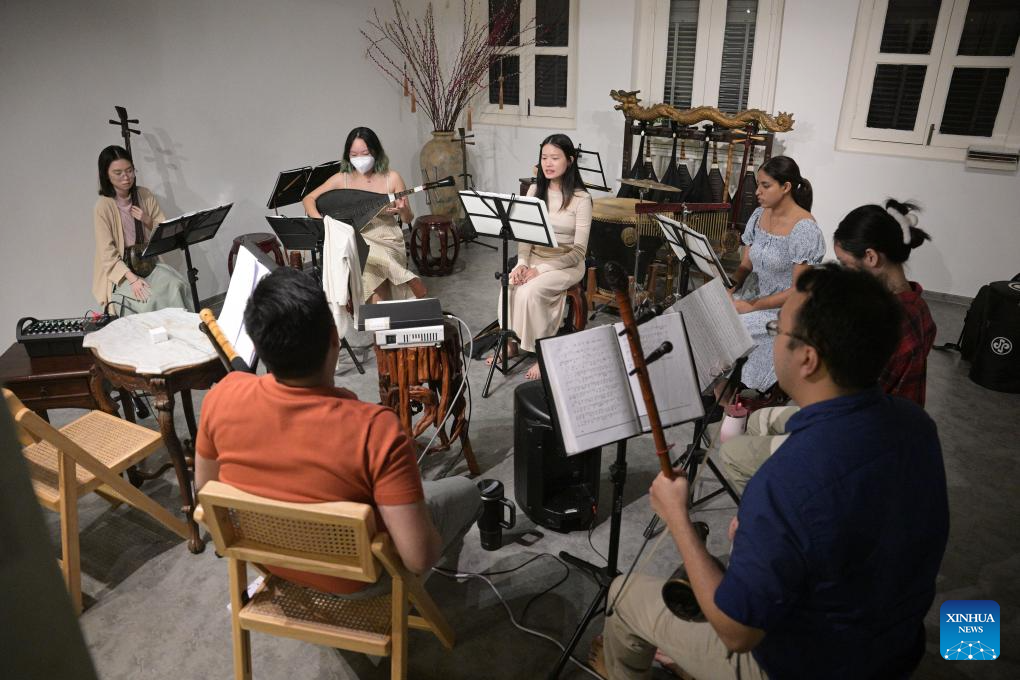
Members of a music society named Siong Leng learn Nanyin in Singapore on Jan. 13, 2025. Nanyin, which originated from southeast China's Fujian Province, is known as the "living fossil" of ancient Chinese music and literally means music in the south. It is a traditional opera in Fujian dialect.
In 2009, Nanyin was listed as a World Human Verbal and Intangible Cultural Heritage by UNESCO.
The inheritance of Nanyin relies on dedicated practitioners. Cai Liyong, a Nanyin artist who started learning Nanyin since childhood, teaches Nanyin to students at a primary school in Jinjiang of Fujian Province every week, promoting authentic Nanyin among young students.
In Singapore, a music society named Siong Leng is also dedicated to the preserving and promoting Nanyin. Established in 1941, Siong Leng made several successful performances in cities including Paris, Tokyo, and New York.
From China to Singapore, from classrooms to the global stage, Nanyin weaves a continuous thread through cultural memories at home and abroad. (Photo by Then Chih Wey/Xinhua)
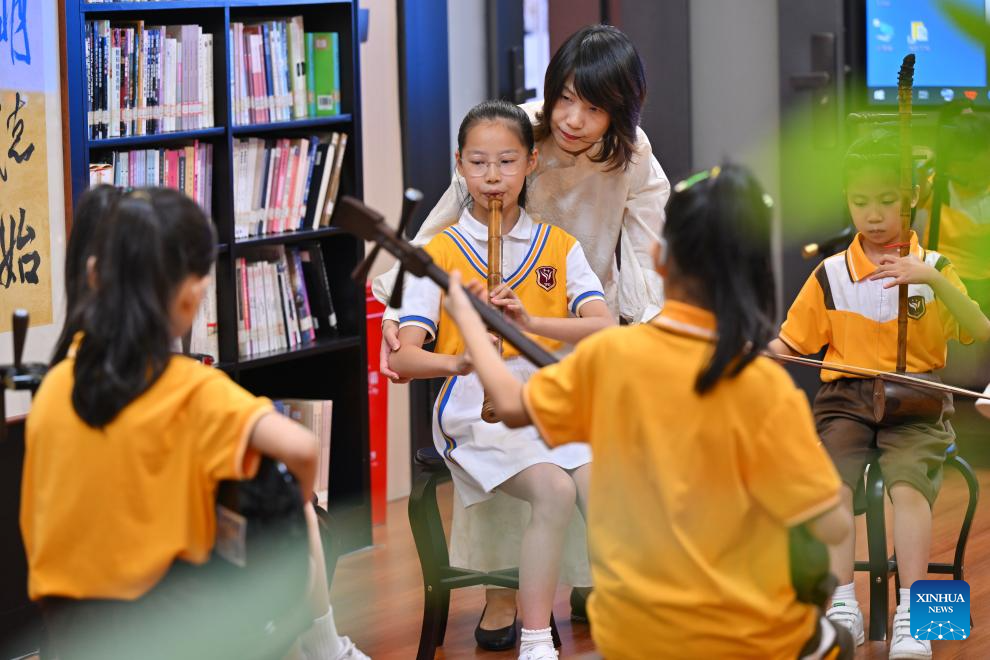
Cai Liyong, a Nanyin artist, teaches students during a Nanyin class at a primary school in Jinjiang, southeast China's Fujian Province, on Oct. 23, 2025. Nanyin, which originated from southeast China's Fujian Province, is known as the "living fossil" of ancient Chinese music and literally means music in the south. It is a traditional opera in Fujian dialect.
In 2009, Nanyin was listed as a World Human Verbal and Intangible Cultural Heritage by UNESCO.
The inheritance of Nanyin relies on dedicated practitioners. Cai Liyong, a Nanyin artist who started learning Nanyin since childhood, teaches Nanyin to students at a primary school in Jinjiang of Fujian Province every week, promoting authentic Nanyin among young students.
In Singapore, a music society named Siong Leng is also dedicated to the preserving and promoting Nanyin. Established in 1941, Siong Leng made several successful performances in cities including Paris, Tokyo, and New York.
From China to Singapore, from classrooms to the global stage, Nanyin weaves a continuous thread through cultural memories at home and abroad. (Xinhua/Jiang Kehong)
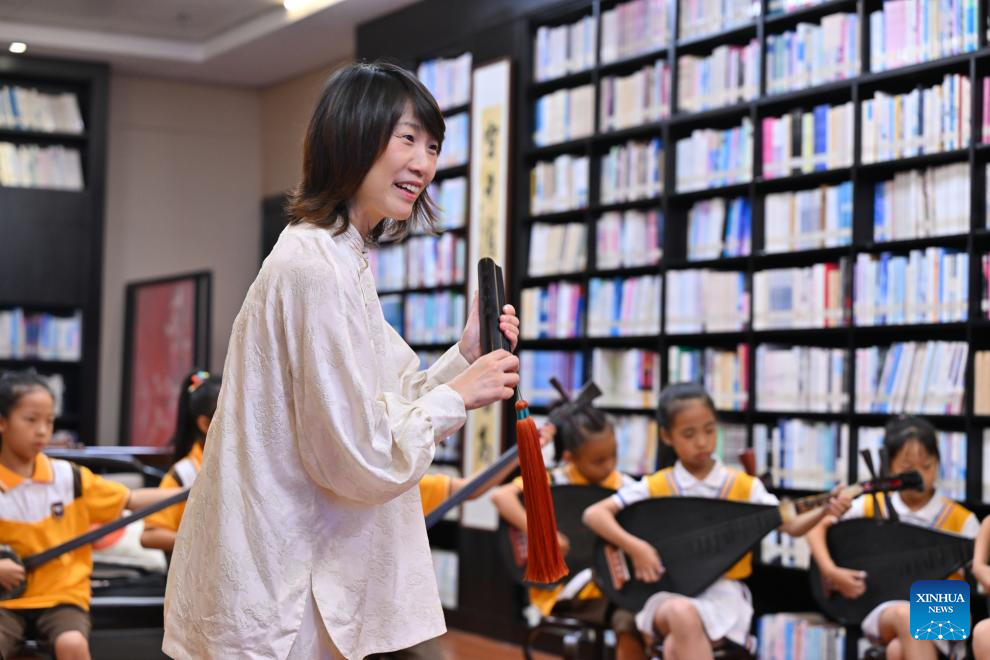
Cai Liyong, a Nanyin artist, teaches students during a Nanyin class at a primary school in Jinjiang, southeast China's Fujian Province, on Oct. 23, 2025. Nanyin, which originated from southeast China's Fujian Province, is known as the "living fossil" of ancient Chinese music and literally means music in the south. It is a traditional opera in Fujian dialect.
In 2009, Nanyin was listed as a World Human Verbal and Intangible Cultural Heritage by UNESCO.
The inheritance of Nanyin relies on dedicated practitioners. Cai Liyong, a Nanyin artist who started learning Nanyin since childhood, teaches Nanyin to students at a primary school in Jinjiang of Fujian Province every week, promoting authentic Nanyin among young students.
In Singapore, a music society named Siong Leng is also dedicated to the preserving and promoting Nanyin. Established in 1941, Siong Leng made several successful performances in cities including Paris, Tokyo, and New York.
From China to Singapore, from classrooms to the global stage, Nanyin weaves a continuous thread through cultural memories at home and abroad. (Xinhua/Jiang Kehong)
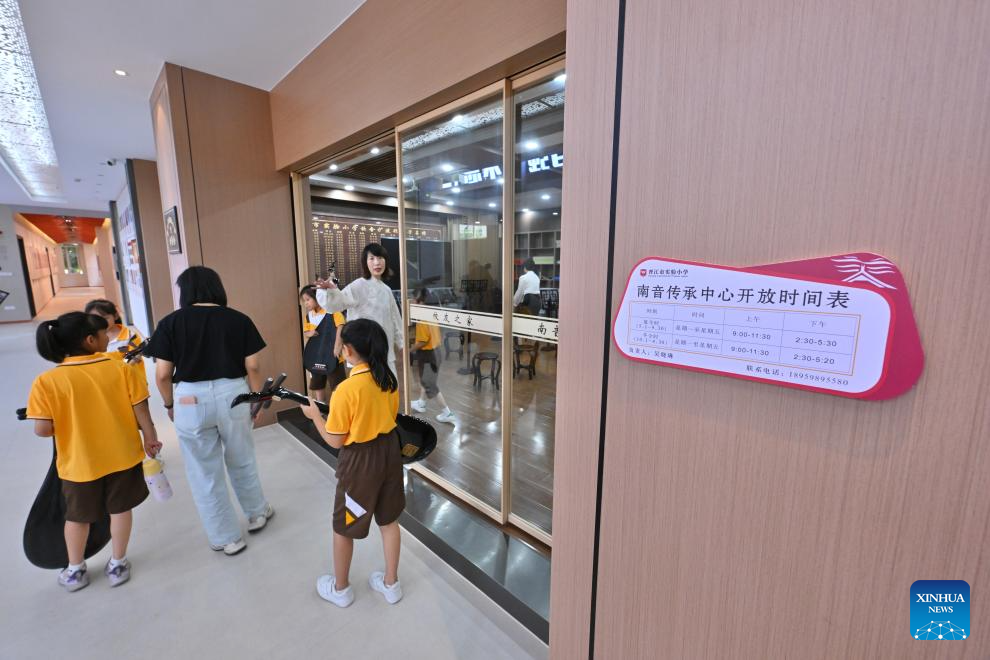
Cai Liyong, a Nanyin artist, talks with students before a Nanyin class at a primary school in Jinjiang, southeast China's Fujian Province, on Oct. 23, 2025. Nanyin, which originated from southeast China's Fujian Province, is known as the "living fossil" of ancient Chinese music and literally means music in the south. It is a traditional opera in Fujian dialect.
In 2009, Nanyin was listed as a World Human Verbal and Intangible Cultural Heritage by UNESCO.
The inheritance of Nanyin relies on dedicated practitioners. Cai Liyong, a Nanyin artist who started learning Nanyin since childhood, teaches Nanyin to students at a primary school in Jinjiang of Fujian Province every week, promoting authentic Nanyin among young students.
In Singapore, a music society named Siong Leng is also dedicated to the preserving and promoting Nanyin. Established in 1941, Siong Leng made several successful performances in cities including Paris, Tokyo, and New York.
From China to Singapore, from classrooms to the global stage, Nanyin weaves a continuous thread through cultural memories at home and abroad. (Xinhua/Jiang Kehong)
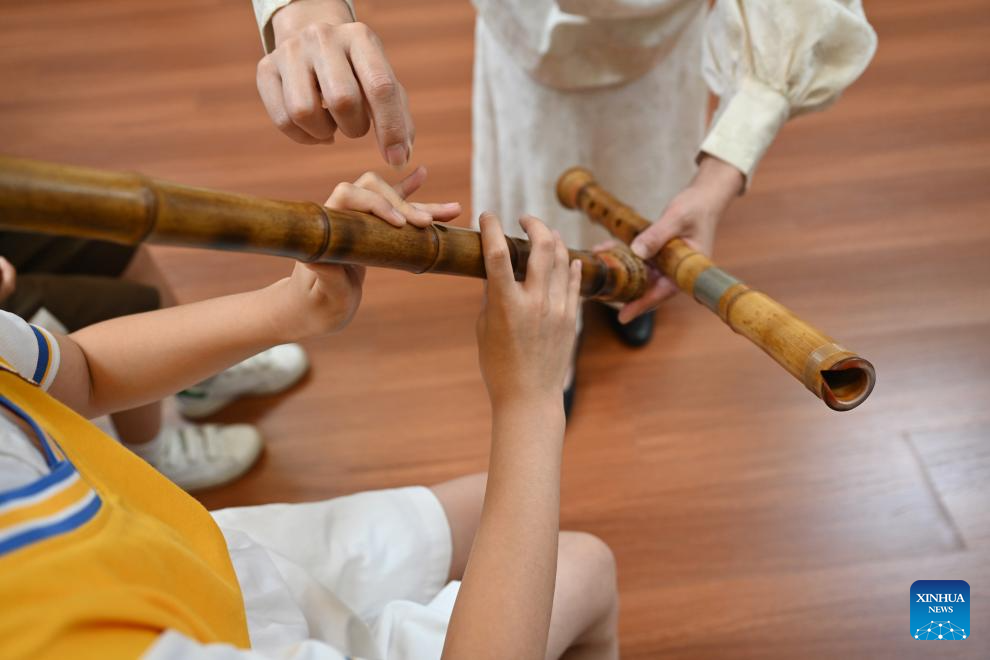
Cai Liyong, a Nanyin artist, teaches students during a Nanyin class at a primary school in Jinjiang, southeast China's Fujian Province, on Oct. 23, 2025. Nanyin, which originated from southeast China's Fujian Province, is known as the "living fossil" of ancient Chinese music and literally means music in the south. It is a traditional opera in Fujian dialect.
In 2009, Nanyin was listed as a World Human Verbal and Intangible Cultural Heritage by UNESCO.
The inheritance of Nanyin relies on dedicated practitioners. Cai Liyong, a Nanyin artist who started learning Nanyin since childhood, teaches Nanyin to students at a primary school in Jinjiang of Fujian Province every week, promoting authentic Nanyin among young students.
In Singapore, a music society named Siong Leng is also dedicated to the preserving and promoting Nanyin. Established in 1941, Siong Leng made several successful performances in cities including Paris, Tokyo, and New York.
From China to Singapore, from classrooms to the global stage, Nanyin weaves a continuous thread through cultural memories at home and abroad. (Xinhua/Jiang Kehong)
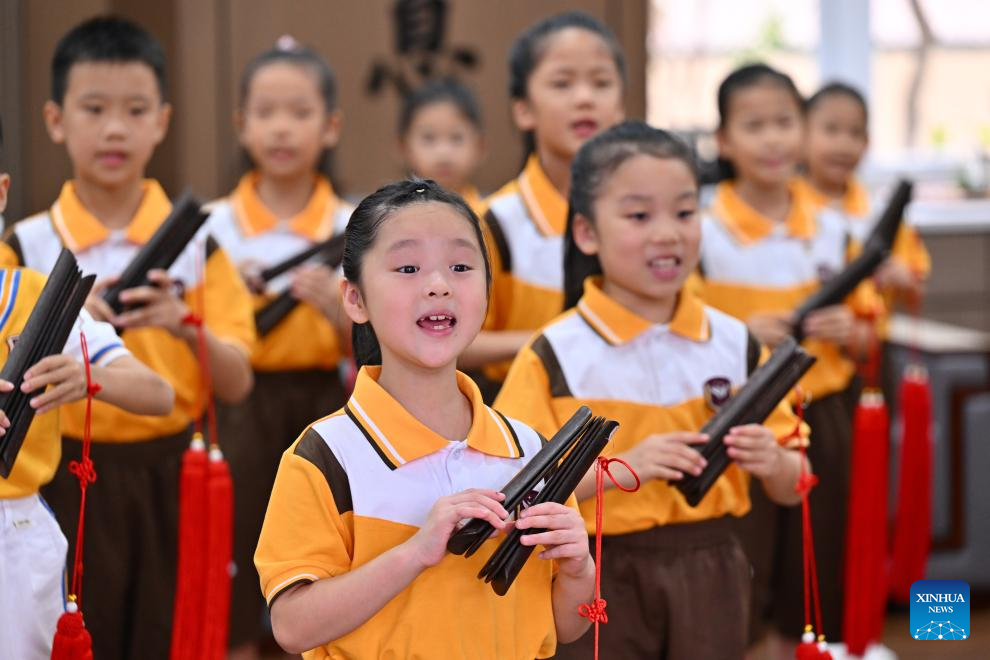
Students rehearse for a performance during a Nanyin class at a primary school in Jinjiang, southeast China's Fujian Province, on Oct. 23, 2025. Nanyin, which originated from southeast China's Fujian Province, is known as the "living fossil" of ancient Chinese music and literally means music in the south. It is a traditional opera in Fujian dialect.
In 2009, Nanyin was listed as a World Human Verbal and Intangible Cultural Heritage by UNESCO.
The inheritance of Nanyin relies on dedicated practitioners. Cai Liyong, a Nanyin artist who started learning Nanyin since childhood, teaches Nanyin to students at a primary school in Jinjiang of Fujian Province every week, promoting authentic Nanyin among young students.
In Singapore, a music society named Siong Leng is also dedicated to the preserving and promoting Nanyin. Established in 1941, Siong Leng made several successful performances in cities including Paris, Tokyo, and New York.
From China to Singapore, from classrooms to the global stage, Nanyin weaves a continuous thread through cultural memories at home and abroad. (Xinhua/Jiang Kehong)
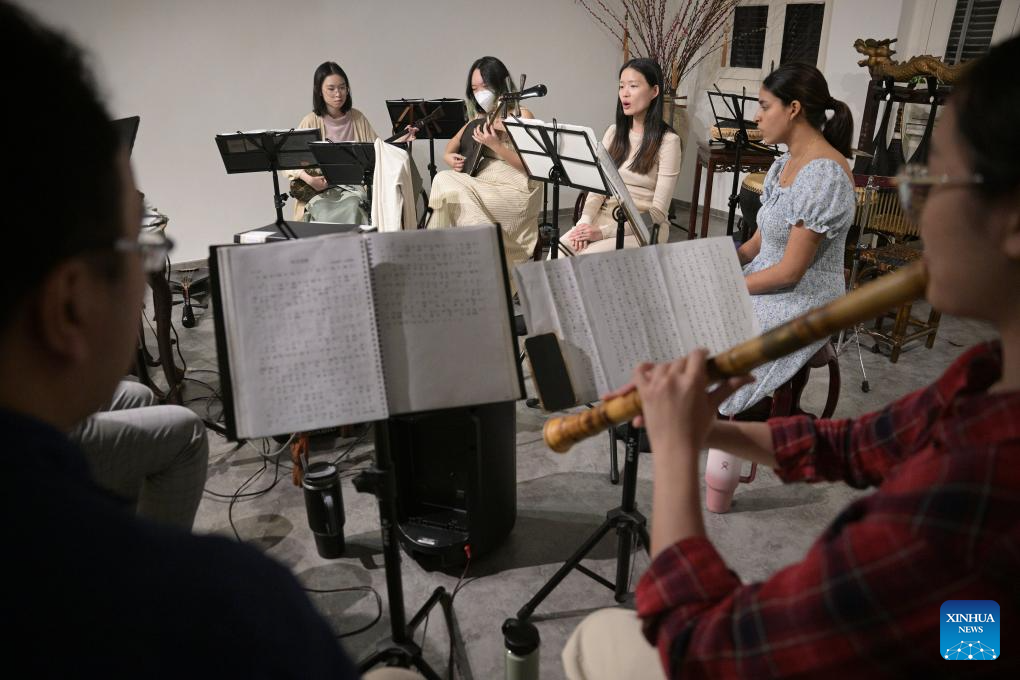
Members of a music society named Siong Leng learn Nanyin in Singapore on Jan. 13, 2025. Nanyin, which originated from southeast China's Fujian Province, is known as the "living fossil" of ancient Chinese music and literally means music in the south. It is a traditional opera in Fujian dialect.
In 2009, Nanyin was listed as a World Human Verbal and Intangible Cultural Heritage by UNESCO.
The inheritance of Nanyin relies on dedicated practitioners. Cai Liyong, a Nanyin artist who started learning Nanyin since childhood, teaches Nanyin to students at a primary school in Jinjiang of Fujian Province every week, promoting authentic Nanyin among young students.
In Singapore, a music society named Siong Leng is also dedicated to the preserving and promoting Nanyin. Established in 1941, Siong Leng made several successful performances in cities including Paris, Tokyo, and New York.
From China to Singapore, from classrooms to the global stage, Nanyin weaves a continuous thread through cultural memories at home and abroad. (Photo by Then Chih Wey/Xinhua)
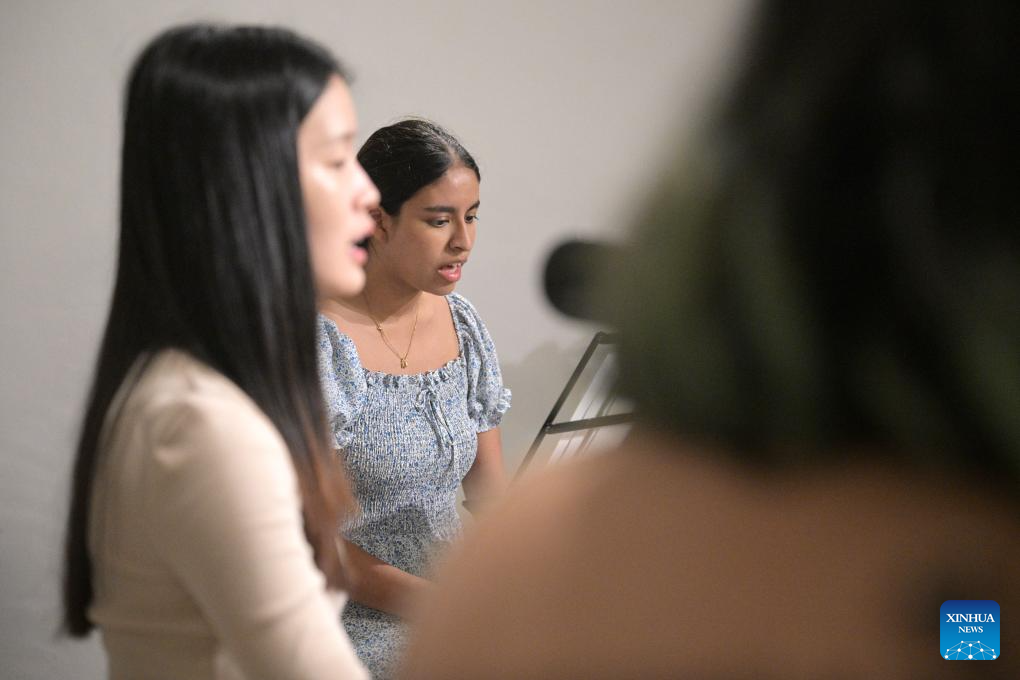
Nadya Tasha Lim (2nd L), a member of a music society named Siong Leng, learns Nanyin in Singapore on Jan. 13, 2025. Nanyin, which originated from southeast China's Fujian Province, is known as the "living fossil" of ancient Chinese music and literally means music in the south. It is a traditional opera in Fujian dialect.
In 2009, Nanyin was listed as a World Human Verbal and Intangible Cultural Heritage by UNESCO.
The inheritance of Nanyin relies on dedicated practitioners. Cai Liyong, a Nanyin artist who started learning Nanyin since childhood, teaches Nanyin to students at a primary school in Jinjiang of Fujian Province every week, promoting authentic Nanyin among young students.
In Singapore, a music society named Siong Leng is also dedicated to the preserving and promoting Nanyin. Established in 1941, Siong Leng made several successful performances in cities including Paris, Tokyo, and New York.
From China to Singapore, from classrooms to the global stage, Nanyin weaves a continuous thread through cultural memories at home and abroad. (Photo by Then Chih Wey/Xinhua)
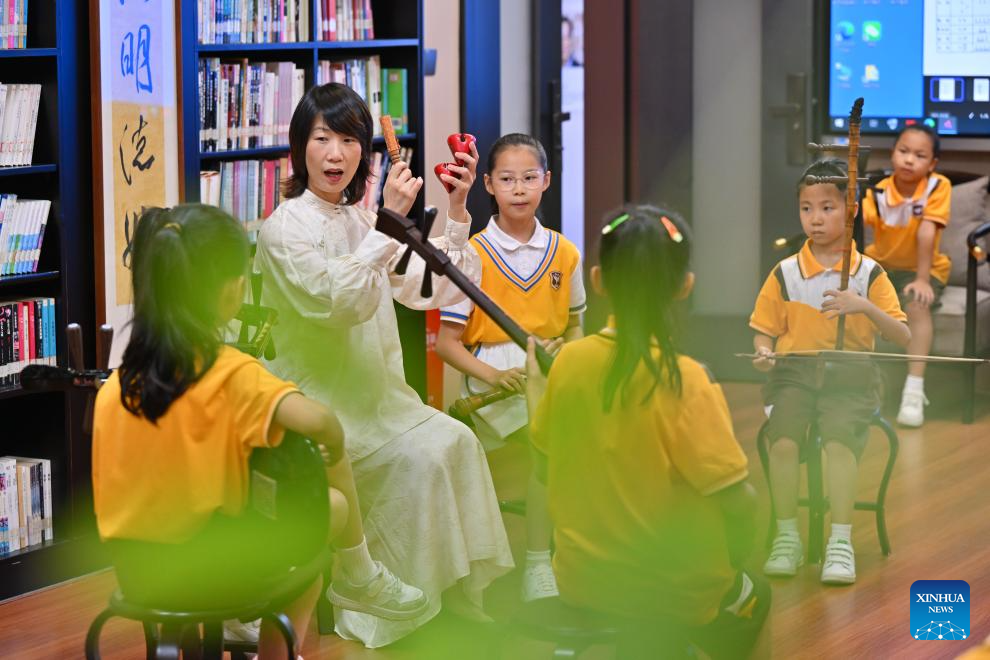
Cai Liyong, a Nanyin artist, teaches students during a Nanyin class at a primary school in Jinjiang, southeast China's Fujian Province, on Oct. 23, 2025. Nanyin, which originated from southeast China's Fujian Province, is known as the "living fossil" of ancient Chinese music and literally means music in the south. It is a traditional opera in Fujian dialect.
In 2009, Nanyin was listed as a World Human Verbal and Intangible Cultural Heritage by UNESCO.
The inheritance of Nanyin relies on dedicated practitioners. Cai Liyong, a Nanyin artist who started learning Nanyin since childhood, teaches Nanyin to students at a primary school in Jinjiang of Fujian Province every week, promoting authentic Nanyin among young students.
In Singapore, a music society named Siong Leng is also dedicated to the preserving and promoting Nanyin. Established in 1941, Siong Leng made several successful performances in cities including Paris, Tokyo, and New York.
From China to Singapore, from classrooms to the global stage, Nanyin weaves a continuous thread through cultural memories at home and abroad. (Xinhua/Jiang Kehong)
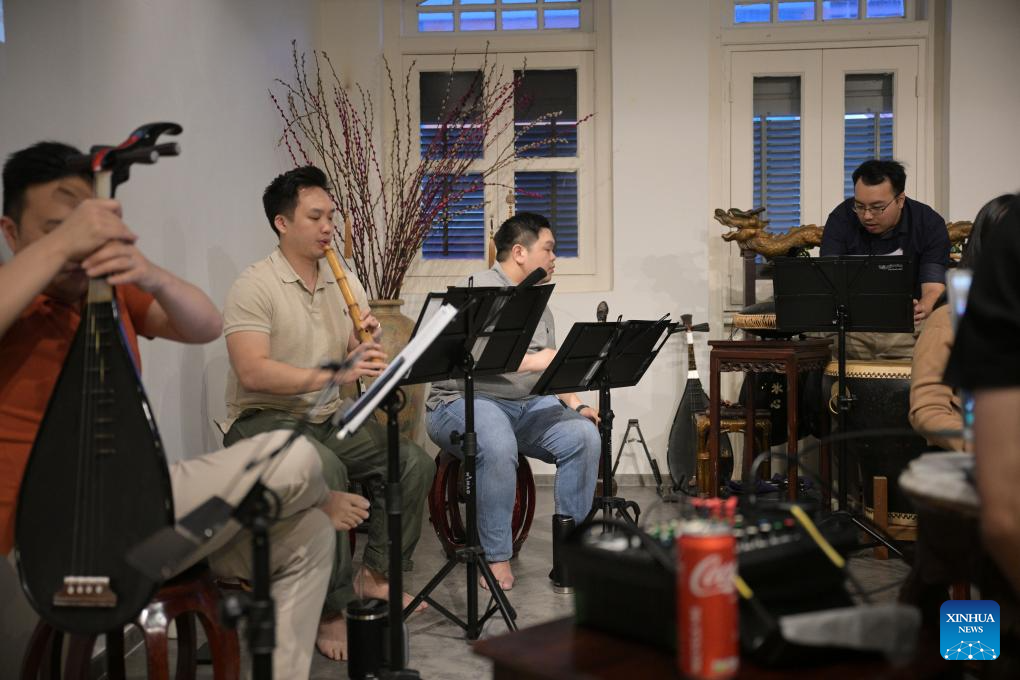
Members of a music society named Siong Leng rehearse Nanyin in Singapore on Jan. 8, 2025. Nanyin, which originated from southeast China's Fujian Province, is known as the "living fossil" of ancient Chinese music and literally means music in the south. It is a traditional opera in Fujian dialect.
In 2009, Nanyin was listed as a World Human Verbal and Intangible Cultural Heritage by UNESCO.
The inheritance of Nanyin relies on dedicated practitioners. Cai Liyong, a Nanyin artist who started learning Nanyin since childhood, teaches Nanyin to students at a primary school in Jinjiang of Fujian Province every week, promoting authentic Nanyin among young students.
In Singapore, a music society named Siong Leng is also dedicated to the preserving and promoting Nanyin. Established in 1941, Siong Leng made several successful performances in cities including Paris, Tokyo, and New York.
From China to Singapore, from classrooms to the global stage, Nanyin weaves a continuous thread through cultural memories at home and abroad. (Photo by Then Chih Wey/Xinhua)



